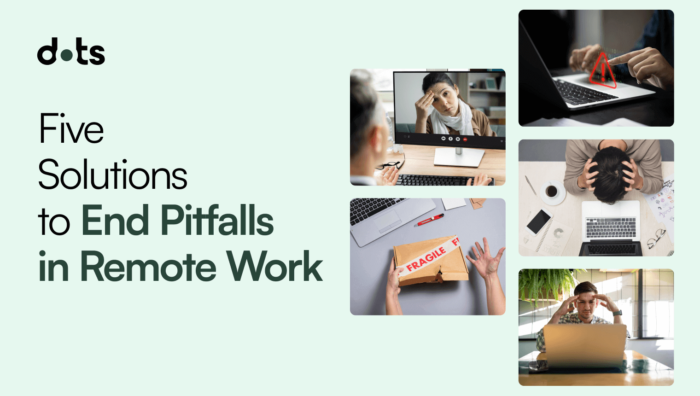Globalization and digitalization have drastically overhauled the international hiring market. More and more businesses aren’t just looking to their local area to find talent—they’re looking in every corner of the world.
But expanding your talent pool isn’t all easy-breezy. There are problems, too – all of which are fixable, but definitely shouldn’t be ignored.
What used to be as simple as commuting to your office on day one has evolved into a global taskforce operation, where a deep understanding of customs tax and worldwide shipping timelines is required (truly, is there anything worse?).
With 75% of businesses planning to increase international hires, this change in landscape requires the perfect remote onboarding solution. That means one that stops your new Francesca (your new hire) from, rather hitting the ground running on her first week, just hitting the ground.
So, what’s the solution? Let’s find out. In this article, we’ve rounded up case studies from remote teams across the globe to share their tips, tricks, challenges, and solutions to help scaling companies get the most out of fully remote work.
Remote Onboarding: What Are the Challenges?
Remote onboarding new employees has its challenges. There’s the physical side of things – getting laptops and keyboards delivered – and the personal stuff, which, according to our case studies, cannot be underestimated.
Let’s dive in.
1. Settling in Employees
First up, you need to take care of the person at the end of the line. It takes time for a new employee to feel like part of the team. When you’re fully remote, days can easily become weeks or even months. An employee who feels disconnected from their team – especially in the first few weeks – is at a huge risk of not sticking around.
In fact, research on remote work finds that remote employees are more likely to quit new jobs within the first two months compared to hybrid or in-office workers. Of course, there could be several causes, but from our case study analysis, we’re sensing a theme.
Forbes coins the phrase ‘the new job blues’ to describe why remote hires quit so early on. They say it’s a feeling, peaking around 2-8 weeks in, fueled mostly by a lack of intimate connection and socialization in 100% remote work environments.
The Solution?
Global teams have found success in the little things – the personal touches that help them feel as included as possible. We learnt a lot from the COVID-19 pandemic, where so much of our remote working habits were born. Miriam Klein of tb.lx reported that her most memorable moment of starting a 100% remote job was being invited to virtual coffees and introduction meetings on day one.
Amir Littman, Cloud Solutions Director at Microsoft has a ‘cameras on’ policy to help new starters get to know everyone as intimately as possible.
He also employs a ‘buddy’ system to help new starters build relationships quicker. “We have a ‘buddy’ system that partners the new people…with established people on the team,” Littman says, sharing how effective it’s been for his team’s productivity.
2. Getting Tech to the Right Place
Logistically, remote onboarding can be a total nightmare. Expanding headcounts internationally adds challenge to the typically easy ‘physical’ stuff. The challenge being, how exactly do you get tech delivered to your new employee’s doorstep?
Shipping your hardware is no easy task. Secure packaging is essential to protect fragile items from breakages. Customs taxes and international shipping rules all play a part in getting your item there safely, too.
Not to mention the timings. The last thing you want is your 100% remote employee left without a laptop for weeks after their start date…
Yet without the right forms, payments, and prepwork (which differs per country, by the way), your delivery could end up significantly delayed – perhaps never arriving at all.
The Solution?
Preparation is key. You need to know your stuff and do your research. If you’re leading HR ops, a remote onboarding policy that makes everything clear can work wonders (as long as someone keeps it up-to-date).
Thousands of businesses are also turning to remote onboarding logistics solutions – leaving a company to focus on what they do best—their own work. Companies that offer the whole package are ideal – ones that allow you to procure the equipment, ship it, and leave collection/wiping/recycling to them.
3. Tech Support Challenges
Tech might be delivered to your new employee’s door easily enough, but what about when something goes wrong? When access isn’t working as it should, remote workers are left entirely in the lurch – with every piece of work grounded to a halt.
Teething issues can happen when new starters get their hardware, so what do you do when your IT or HR department is a million miles away, unable to help?
This isn’t just a problem with remote onboarding, but with IT hardware generally when you’re working online. If something goes wrong at any point during your remote employee’s time with you, someone has to fix or repair the issue.
The Solution?
This is where MDM comes into play. MDM (Mobile Device Management) is the gold-standard for ensuring remotely onboarded employee receive a fully configured device (with all the right apps, security settings, and access permissions) from day one. For remote teams, MDM streamlines IT management by enabling secure updates and keeping your employees (and data) protected no matter where employees work.
If you opt for IT asset management (ITAM) software to solve your remote onboarding issues, you’ll aim for one which integrates MDM to streamline the entire process. and hardware setup is the model solution.
Alongside helping you with IT procurement, ITAM software can collect faulty items, issue replacements, and offer as much tech support as possible to get employees back on track.
4. Offboarding Security Risks
Onboarding and offboarding go hand-in-hand. You can’t have one without the other. When deciding to hire remotely, you have to consider what happens when those employees – some of which are thousands of miles away – leave.
Offboarding remote employees has its own set of challenges. Getting tech back? Storing the hardware safely and securely? Wiping the software? Prepping the device for delivery to their replacement?
Companies can experience all sorts of breaches (data protection violations, intellectual property theft, the exposure of company secrets, etc.) when tech isn’t properly managed during the offboarding process.
The Solution?
It’s a tricky one. You can mandate employees send their equipment to a certain address after they leave, but that has its risks. What if it’s a disgruntled employee who never does it?
Logistically, there’s an issue, too. Where does the hardware get sent to? For fully remote companies, you don’t want an IT staff member storing company laptops in an airing cupboard at home…
Realistically, you have two options. You need a manned base with a warehouse for wiping, storing, and recycling hardware – or you outsource IT asset management to a dedicated onboarding and offboarding company.
Summary: How to Successfully Move Forward With Remote Hires
Growing your international workforce is a blue-ribbon move. Gaining top-tier talent remolds a team and accelerates business – all of which is possible when you expand hiring across the globe.
There are challenges, yes, but workable solutions are always around the corner. Time and again, companies are mastering the art of remote onboarding – creating happy remote workers who work hard and stick around.
Considering overseas expansion? We can help. At Dots, our all-in-one platform solution makes it easy for you (or your HR teams, IT departments, hiring managers etc.) to successfully onboard new employees and set the tone for future success.
With Dots, you can order pre-configured IT equipment that meets specs, find the best price easily with our multi-vendor online procurement platform, and ship IT hardware to your new starter’s door – with all issues managed along the way, including handling offboarding and storage of unused equipment.
Ready to offboard the headache? Book a demo with our team of experts today.





